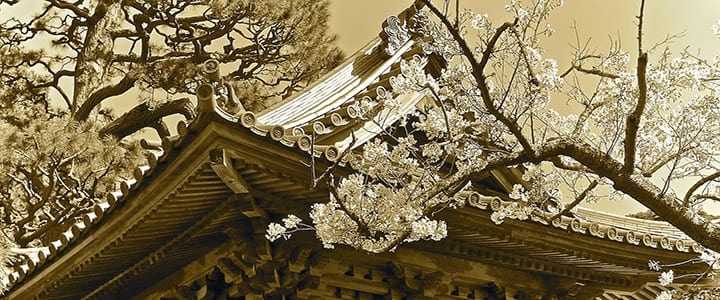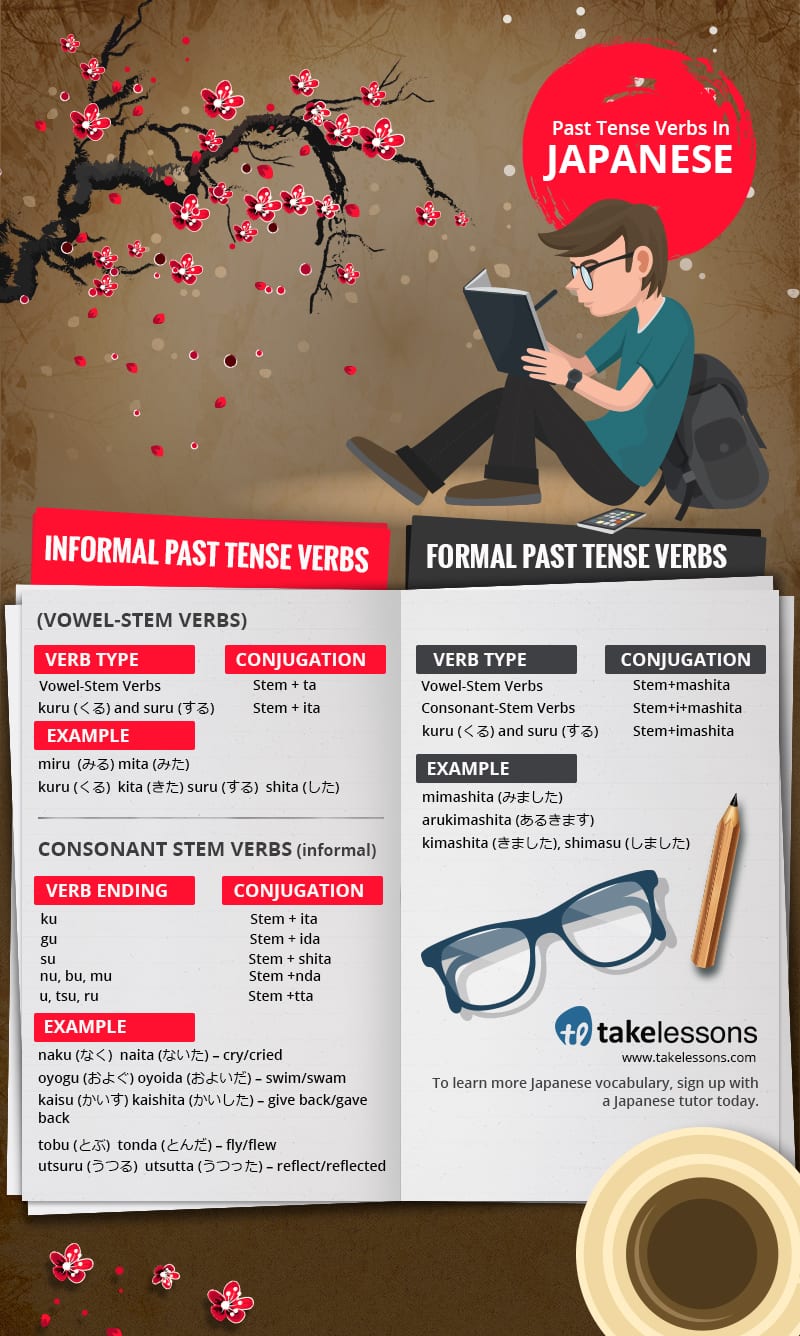Want to learn to describe past events in Japanese? Here, Ann Arbor, MI teacher Elaina R. shares some helpful hints to conjugate past tense Japanese verbs…
Unfortunately, past tense verbs are not as easy to conjugate as present tense and future tense Japanese verbs. Past tense Japanese verbs are still surprisingly simple to conjugate, however, compared with verbs in many European languages.
By breaking down the different verb endings and learning some memorization tips, you can give yourself a jump start to describe the past in Japanese.
Using Past Tense in Japanese
Japanese past tense is much like English past tense. It’s used to describe events that have already happened. For example, “I saw a film,” is 映画を見た in informal past tense.
The Japanese past tense can also be used as the equivalent to the past perfect tense in English. “I have seen that film” is “あの映画を見た” in informal past tense; the only thing I had to add was the word “that.”
Past Informal Japanese Verb Endings
Past informal Japanese verb endings for consonant-stem verbs are kind of tricky, so let’s start with vowel-stem verbs and irregular verbs.
| Verb Type | Conjugation | Example |
| Vowel-Stem Verbs | Stem+ta | miru (みる) → mita (みた) |
| kuru (くる) and suru (する) | Stem+ita | kuru (くる) → kita (きた) suru (する) → shita (した) |
To conjugate consonant-stem verbs into informal past tense verbs, we have to sort them into five categories.
| Verb Ending | Conjugation | Example |
| -ku | Stem+ita | naku (なく) → naita (ないた) – cry/cried |
| -gu | Stem+ida | oyogu (およぐ) → oyoida (およいだ) – swim/swam |
| -su | Stem+shita | kaisu (かいす) → kaishita (かいした) – give back/gave back |
| -nu, -bu, mu | Stem+nda | tobu (とぶ) → tonda (とんだ) – fly/flew |
| -u, -tsu, -ru | Stem+tta | utsuru (うつる) → utsutta (うつった) – reflect/reflected |
This may seem like a lot to remember, but here are some helpful hints:
- Try memorizing just one conjugation in each category. If you work backwards, you can figure out the rule from the verb. For instance, if you know that the past tense of nomu (to drink) is nonda (drank), you can infer that the –mu stem changes to –nda in the past tense.
- Utsuru is a Japanese word with several meanings, including “to reflect” and “to transfer” (a disease). If you remember this word, you can remember that –u, -tsu, and –ru verb endings are all in the same group.
Formal Past Tense Japanese Verbs
After all that work, you may be relieved that formal past tense is a breeze. Instead of –masu, the present-tense ending, past tense formal uses the verb ending –mashita.
| Verb Type | Conjugation | Example |
| Vowel-Stem Verbs | Stem+mashita | mimashita (みました) |
| Consonant-Stem Verbs | Stem+i+mashita | arukimashita (あるきます) |
| kuru (くる) and suru (する) | Stem+imashita | kimashita (きました) shimasu (しました) |
Share this Image On Your Site
Practicing Past Tense in Japanese
As with everything, practice makes perfect. With past tense Japanese verbs, your Japanese teacher may recommend mastering the easier formal verb endings first before moving on to the more complex consonant-stem informal verb endings.
With some elbow grease and the right teacher, it wont take long to learn to talk about bygones in Japanese.
Want to learn more Japanese grammar? Find a Japanese teacher near you!
 Post Author: Elaina R.
Post Author: Elaina R.Elaina R. teaches singing in Ann Arbor, MI. She is acquainted with many languages and speaks English, Japanese, Italian, and German. She earned a Bachelor of Music from the University of Southern California, and she is currently working on her Master of Music from the University of Michigan. Learn more about Elaina here!
Photo by sswj
Maile Proctor



